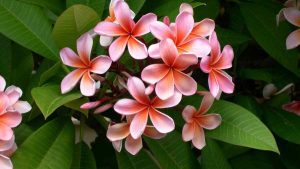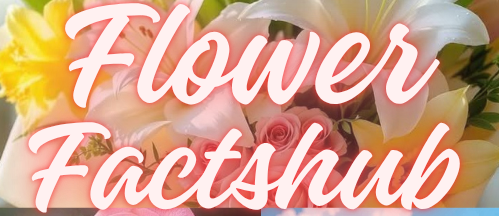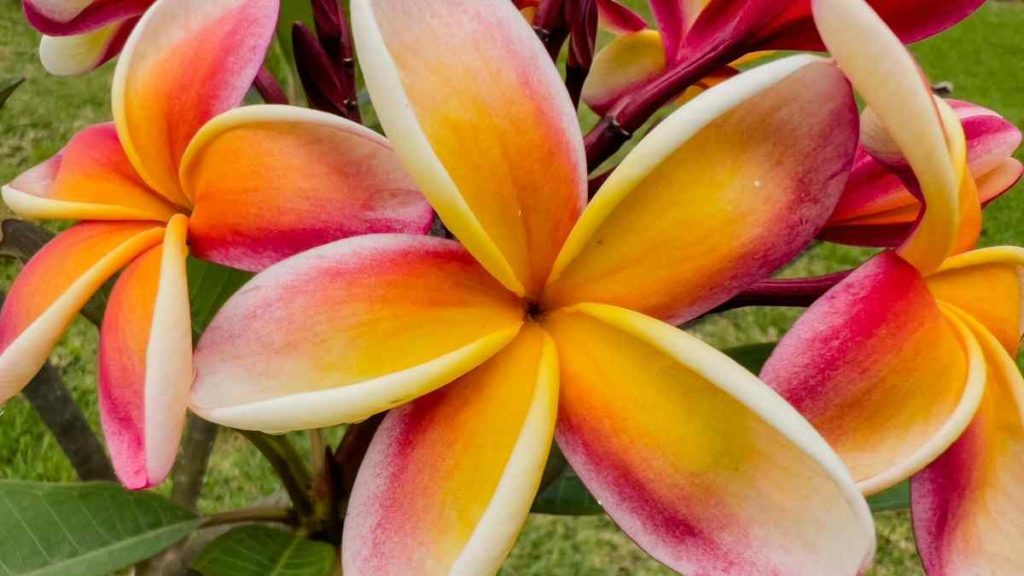There’s something truly calming about Plumeria Flowers, also known as Frangipani. This tropical genus of about 11 or 12 species of small trees and shrubs belongs to the dogbane family (Apocynaceae) and is native to the New World tropics. You might recognize these delicate, five-petaled flowers from Hawaiian leis their waxy, highly fragrant flower clusters are both elegant and soothing. I still remember the first time I walked through a Plumeria Flowers garden; the air was filled with the fragrant breeze, instantly calming my senses.
Though it’s a slow grower, Plumeria can grow up to 30 feet tall, though it often stays smaller in containers. These tropical plants thrive in full to partial sun, well-draining soil, and high humidity. People often cultivate varieties like Plumeria rubra and P. rubra acutifolia in warm climates as ornamentals for their attractive, fragrant flowers. Some even use them in perfumes to imitate their odour. Gardeners can easily propagate them from stem cuttings, just like Chinese hibiscus, another shrub or small tree that grows to 1.2–3 metres (4–10 feet) in height and 1.5–2.4 metres (5–8 feet) in width. With simple, evergreen leaves, unlobed shapes, and serrated margins, both plants offer visual peace and vibrant life.
What’s more fascinating is that these flowers whether yellow, pink, white, or red don’t just look good. They carry a centuries-old emotional power, passed on through leis, perfume traditions, and even the silent attraction of pollinators like hummingbirds. From pollen-bearing stamens, funnel-shaped blooms, and single or double hybrids, to how the fruit forms as a capsule, this isn’t just a plant it’s a sensory experience.
What makes Plumeria flowers so special and soothing compared to other tropical blooms?
Plumeria flowers are special and soothing because of their sweet, calming fragrance, soft velvety petals, and their association with tropical tranquility and relaxation. Unlike many other tropical flowers, Plumeria blooms are often linked to peaceful moments, spiritual rituals, and emotional healing, making them a natural choice for stress relief and inner calm. Their simple beauty and gentle scent have a unique way of soothing the senses and creating a serene atmosphere.
The Botanical Profile of Plumeria
Plumeria Flowers, often lovingly called Frangipani, is more than just a tropical beauty it’s a flower that carries generations of healing, fragrance, and cultural symbolism in its petals. The Apocynaceae or dogbane family includes the genus Plumeria, which comprises approximately 11 to 12 species of small trees and shrubs. These plants are native to the New World tropics. These deciduous plants are well-known for their thick, leathery branches and their ability to thrive in warm climates, especially in areas with high humidity and well-draining soil.
What truly sets Plumeria apart is its five-petaled fragrant flowers, which come in dreamy shades of white, pink, yellow, and red often edged in contrast, like the stunning white-edged yellow blooms of the Mexican frangipani (P. rubra acutifolia). The flowers are not only waxy and highly fragrant, but also form in delicate clusters that you might recognize from traditional Hawaiian leis. Though slow growers, they can reach up to 30 feet in height, though they typically remain much smaller in containers, making them ideal for home gardeners and collectors.
In my own experience growing Plumeria rubra, I’ve found its resilience and visual charm truly rewarding. Whether watching the first blooms of the season open under the full sun, or enjoying their sweet perfume in the early morning breeze, this flower never fails to soothe the senses and uplift the spirit.

Symbolism and Cultural Significance
The Plumeria, or Frangipani, is more than just a beautiful tropical flower it’s a deeply symbolic plant woven into the fabric of many cultures. Across the New World tropics and warm climates where it grows, the fragrant clusters of five-petaled flowers have come to represent meanings far beyond their physical form.
In Hawaiian tradition, the Plumeria flower is a key part of the lei, a garland given as a gesture of welcome, affection, or farewell. It’s more than just decoration it’s an expression of love and respect. In some Pacific Island cultures, the placement of the flower behind the ear can signal relationship status: behind the left ear means taken, while the right signifies availability. These subtle yet powerful traditions reflect the flower’s delicate beauty and its role in social communication.
In other parts of the world, the Plumeria carries spiritual symbolism. Hindu culture, it is associated with devotion and immortality often used in temple offerings due to its fragrance and enduring freshness. Buddhist also teachings, it symbolizes new beginnings and the renewal of life, aligning beautifully with its ability to grow from simple stem cuttings into thriving, blooming plants.
From my personal travels in Southeast Asia and the Pacific, I’ve often encountered Plumeria trees outside temples and sacred sites, standing as silent guardians of peace and introspection. Their fragrance, especially in the early evening, evokes a sense of calm unlike anything else.
The Fragrance and Uses of Plumeria
The fragrance of Plumeria is its most enchanting quality soft yet captivating, sweet but never overpowering. It’s a scent that lingers gently in the air, especially at dusk, when the tropical plants seem to exhale their essence into the breeze. As someone who’s spent countless evenings in gardens full of Plumeria, I can say that its highly fragrant nature brings not only peace but also a nostalgic calm that’s hard to put into words.
The scent of Plumeria flowers varies across its species and cultivars, ranging from jasmine-like sweetness to hints of citrus and spice. The most commonly cultivated types, like Plumeria rubra, are prized for their white-edged, yellow, pink, or red blossoms all of which have distinctive odours. It’s no surprise that perfumes often try to imitate the delicate, tropical fragrance of this flower. Many luxury fragrance brands use Plumeria extracts or recreate its notes synthetically to capture its calming effect.
Beyond its use in perfumes, Plumeria holds practical and cultural value. In traditional medicine across various tropical regions, it’s been used in balms and oils for its soothing qualities. Its flowers and even its leaves have been included in infusions believed to relieve stress, skin irritations, and even fever. Although modern medicine hasn’t deeply studied these uses, their historical significance remains strong.
Additionally, Plumeria’s use in religious ceremonies, home decor, and spa treatments reflects its symbolic and sensory power. You’ll often see bowls of floating waxy flowers in Southeast Asian spas a visual and aromatic nod to serenity. Whether enjoyed in a vase, worn in a Hawaiian lei, or captured in a bottle, Plumeria’s soothing scent is truly a gift from nature.
How to Grow and Care for Plumeria
Growing Plumeria also known as Frangipani is a joy for gardeners who love vibrant flowers and calming tropical scents. With the right care, these small trees or shrubs can reward you with delicate, highly fragrant flower clusters that bloom generously during warm seasons. In my own experience, once you understand its needs, Plumeria becomes one of the easiest and most satisfying tropical plants.
Light and Temperature
Plumeria thrives in full sun and warm climates, ideally with at least 6–8 hours of sunlight each day. While they can tolerate partial sun, too much shade results in fewer blooms. These tropical plants are sensitive to cold, so if you live in a region where temperatures drop below 50°F (10°C), it’s best to grow Plumeria in containers. This way, you can move them indoors during the colder months.
Soil and Watering
Use well-draining soil a cactus or succulent mix is ideal. Poor drainage can lead to root rot. I always add perlite to my mix to keep it airy. Let the soil dry out slightly between waterings. Overwatering is one of the few mistakes that can harm this otherwise slow grower. When you water, do so deeply until it runs out the bottom of the pot.
Feeding and Growth
To encourage growth and abundant five-petaled flowers, use a phosphorus-rich fertilizer (look for a “bloom booster” label). During the growing season (spring and summer), feed about once a month. Plumeria can reach up to 30 feet tall in its native environment, but most remain much smaller in containers usually around 3 to 6 feet, making them perfect for patios or small gardens.
Pruning and Propagation
Prune after the blooming season to maintain shape and encourage branching, which leads to more flower clusters. Plumeria is easily propagated from stem cuttings. Let the cut end dry out for a few days before planting to avoid rot. Within weeks, you’ll often see new roots developing a magical moment for any gardener.
Humidity and General Tips
High humidity supports optimal growth, though Plumeria is surprisingly tolerant of drier conditions if other needs are met. Keep an eye out for pests like spider mites or mealy bugs, especially when plants are overwintered indoors. Wiping the leaves occasionally helps keep them clean and pest-free.
Whether planted in your backyard or placed on a sunny balcony, Plumeria brings a touch of the tropics right to your door. Caring for it doesn’t require expert skills just a bit of consistency and sunlight, and the rewards are beyond satisfying.
Plumeria in Landscaping and Gardens
With its vibrant flowers and serene tropical aura, is more than just a botanical delight it’s a living accent piece in landscaping that transforms ordinary spaces into paradise. Over the years, I’ve used Plumeria in various gardens, and its elegance never fails to bring a sense of calm and tropical charm.
Because Plumeria trees are both visually striking and relatively low-maintenance, they’re ideal for ornamental use in warm climates Because Plumeria trees are both visually striking and relatively low-maintenance, they’re ideal for ornamental use in warm climates. Whether you’re working with a small courtyard, a spacious backyard, or even a balcony garden, plumeria adapts beautifully. Their compact growth habit in pots allows urban gardeners to enjoy their beauty without needing vast space. When planted in the ground, they can mature into graceful small trees, reaching up to 30 feet, adding vertical interest without overwhelming nearby plants.
In landscape design, plumerias are often used as focal points especially when in bloom, their five-petaled, highly fragrant flowers create a sensory experience that draws the eye and calms the spirit. I’ve seen homeowners line their walkways with plumeria, or place them near windows to enjoy their scent on breezy evenings. Their fragrant blossoms also attract pollinators, such as hummingbirds, enhancing the ecological value of the space.
One pro tip from experience: pair plumeria with well-draining soil companions like succulents or tropicals that also thrive in full sun. Not only does this mimic their native habitat, but it also helps create a cohesive, low-effort garden design. When they bloom seasonally, they give off a peaceful, almost nostalgic feeling reminding many of island holidays or childhood gardens.
Final Thoughts
Plumeria flowers, also known as Frangipani, are more than just a beautiful sight, they’re a true symbol of peace, relaxation, and tropical elegance. Their delicate fragrance, soothing colors, and graceful appearance make them a favorite in gardens, spas, and even spiritual rituals around the world. Whether you’re drawn to them for their calming scent, their cultural meaning, or simply their timeless charm, Plumeria has a way of touching the soul.
By adding Plumeria to your surroundings, be it in a garden, bouquet, or essential oil, you invite nature’s gentle serenity into your life. These enchanting blossoms serve as a reminder to slow down, breathe deeply, and embrace the beauty that simplicity offers.
Frequently Asked Questions (FAQs)
Q1. Can I grow Plumeria indoors?
Yes, Plumeria can be grown indoors, especially in colder regions. Place it near a south-facing window where it can receive at least 6 hours of sunlight daily. Use a well-draining soil mix, and water sparingly during the dormant winter months. You may also need to supplement with a grow light in low-light environments.
Q2. How often should I water my Plumeria plant?
Plumeria prefers a “soak and dry” approach. During the active growing season, water deeply but allow the soil to dry out completely before the next watering. Overwatering can lead to root rot, especially in containers. In winter, reduce watering significantly as the plant goes dormant.
Q3. Why isn’t my Plumeria blooming?
A few reasons could prevent blooming:
- Lack of full sun exposure (Plumeria needs 6–8 hours of direct light daily)
- Excessive nitrogen fertilizer, which encourages leaves but not flowers
- Immaturity: Young plants (especially from cuttings) may take 2–3 years to bloom
Try using a phosphorus-rich fertilizer and make sure your plant gets plenty of sunshine.
Q4. Can Plumeria survive winter outdoors?
Only in tropical or warm climates (USDA zones 10–12). In colder areas, bring containers indoors or store the plant in a dormant state in a frost-free area. Avoid freezing temperatures as they can kill the plant.
Q5. How do I propagate Plumeria from cuttings?
Take a 12–18 inch cutting from a healthy branch during the growing season. Let it dry for a week until the cut end callouses. Then, plant it in well-draining soil, keep it in a warm, bright spot, and water sparingly until roots develop.


